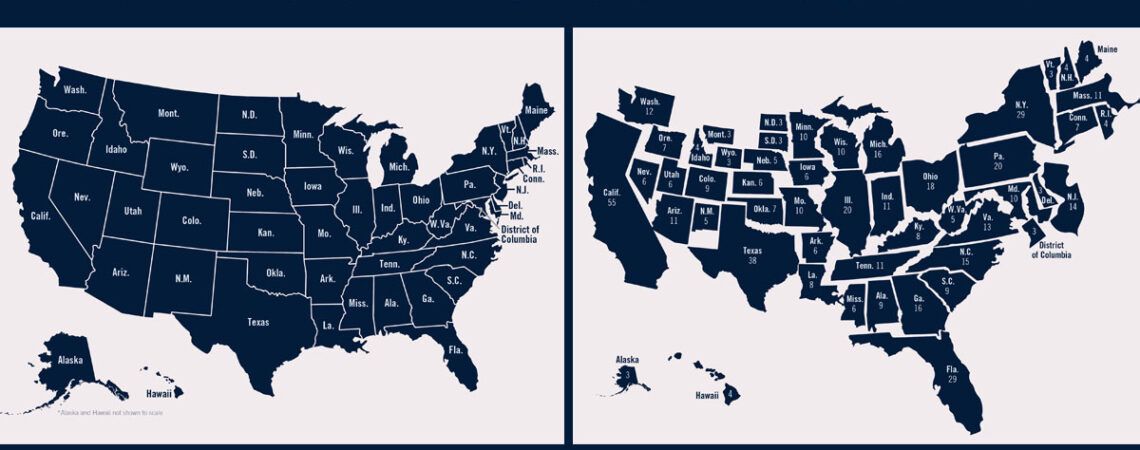The Electoral College is a unique system used in the United States to elect the president and vice president.
Understanding how it works and its impact on elections is crucial for comprehending the American political landscape. Here’s an in-depth look at the Electoral College system and the debates surrounding its effectiveness.
What is the Electoral College?
The Electoral College is a group of electors chosen from each state and the District of Columbia. These electors formally elect the president and vice president of the United States.
The number of electors per state is equal to the total number of its senators and representatives in Congress, resulting in a total of 538 electors.
How Does it Work?
During a presidential election, voters in each state cast their ballots for a slate of electors pledged to a specific candidate.
The candidate who wins the majority of votes in a state typically receives all of that state’s electoral votes (except in Maine and Nebraska, which use a proportional system). A candidate needs a majority of 270 electoral votes to win the presidency.
History and Purpose
The Electoral College was established by the framers of the U.S. Constitution as a compromise between electing the president by Congress and electing the president by popular vote.
The system was designed to balance the influence of smaller states with that of larger states and to ensure a knowledgeable and deliberative selection of the president.
Impact on Elections
The Electoral College can lead to outcomes where a candidate wins the presidency without securing the majority of the popular vote.
This has occurred in several elections, most recently in 2000 and 2016. Such outcomes have sparked debates about the fairness and effectiveness of the system.
Debates and Criticisms
Critics argue that the Electoral College is undemocratic because it can result in a president who did not win the popular vote. They also contend that it gives disproportionate influence to smaller states and swing states, while marginalizing voters in solidly red or blue states.
Proponents, however, argue that the system protects the interests of smaller states and ensures a geographically diverse support base for the president.
Reform Proposals
Various proposals for reforming or abolishing the Electoral College have been suggested. These include the National Popular Vote Interstate Compact, which aims to ensure the president is elected by popular vote, and constitutional amendments to eliminate or modify the Electoral College. Each proposal has its own set of challenges and considerations.
Conclusion
The Electoral College is a fundamental aspect of the U.S. electoral system, with significant implications for presidential elections. Understanding its structure, purpose, and the debates surrounding it is essential for informed civic engagement.
Whether it remains or is reformed, the Electoral College will continue to shape American politics and elections.
Explore the intricacies of the Electoral College system and the ongoing debates about its role in U.S. presidential elections.

